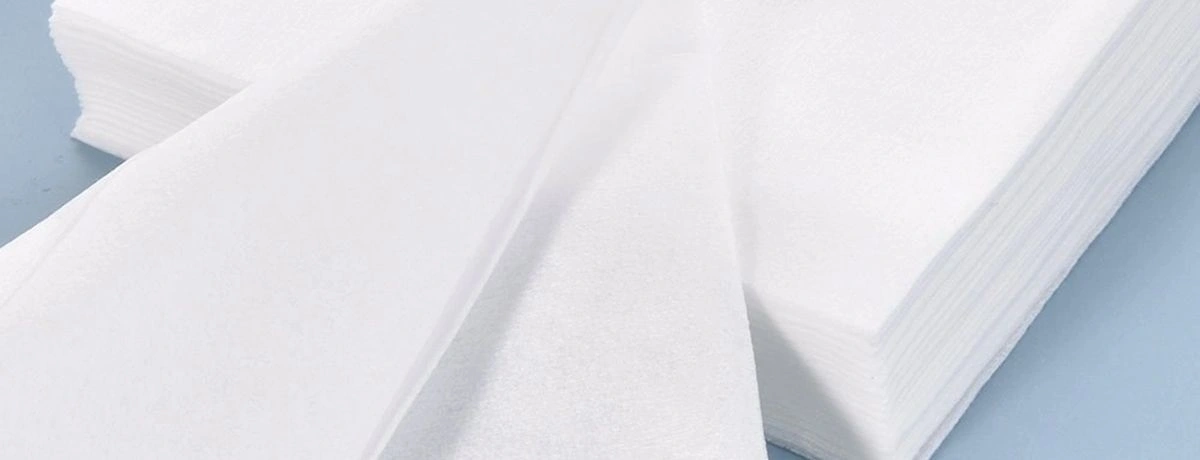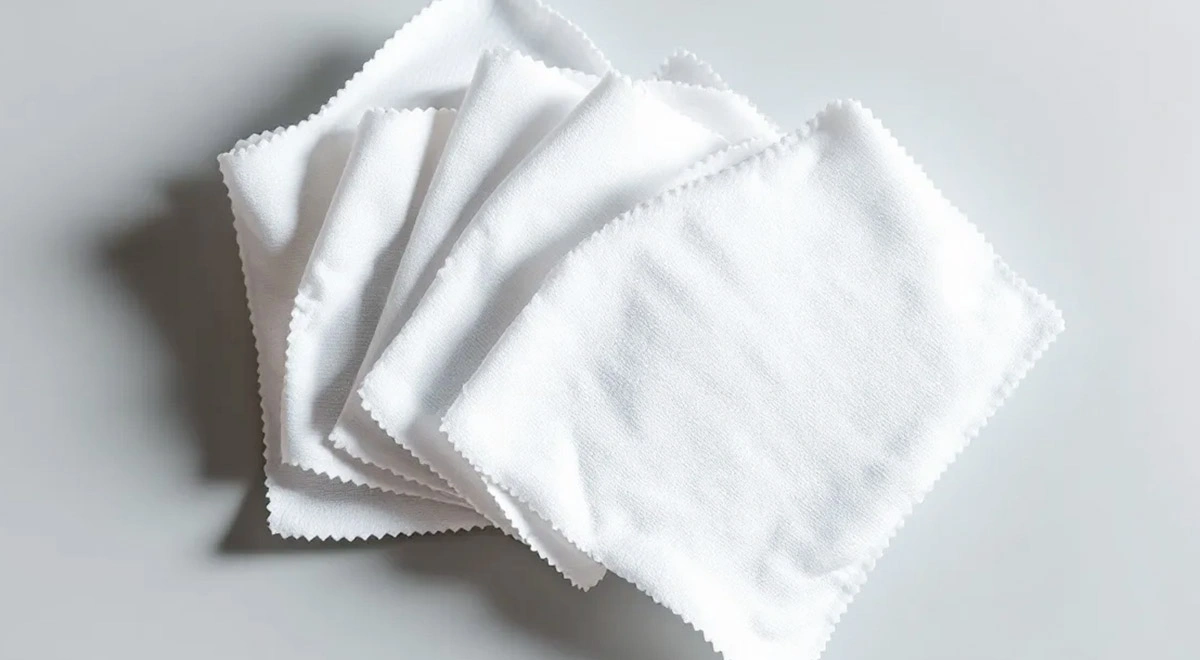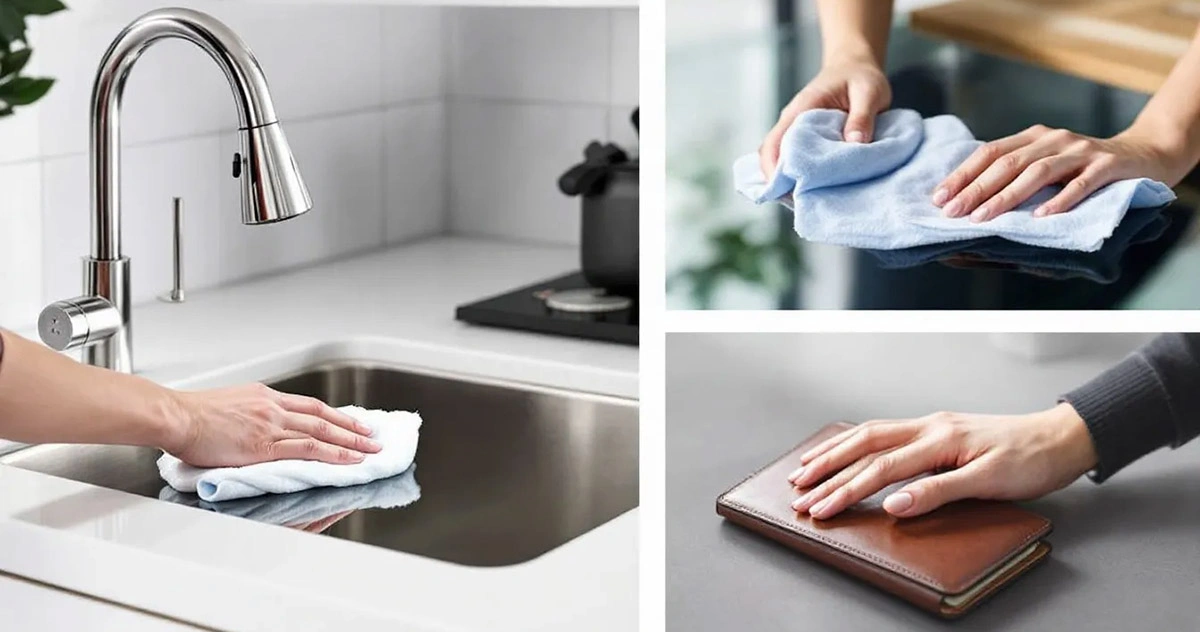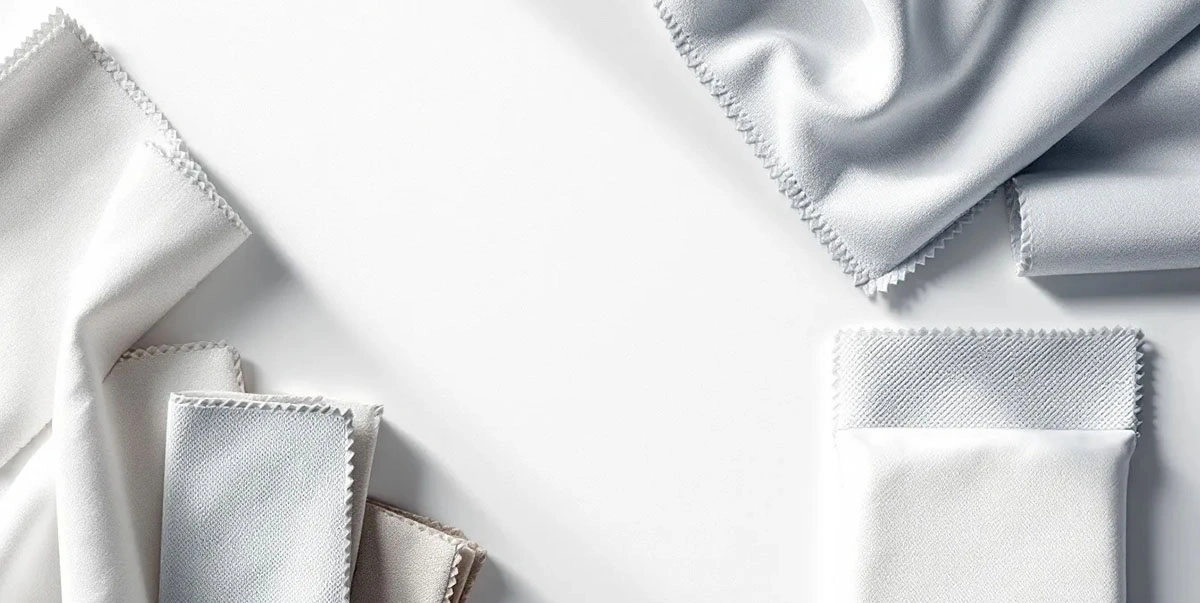Top Nonwoven Wipe for Cleanroom Applications: A Comprehensive Review

Nonwoven wipes are essential for maintaining clean room environments. They are made by bonding fibers through various methods, resulting in wipes that produce minimal lint and have high absorbency and durability. This article explores their benefits, features, and uses in critical applications.
Key Takeaways
-
Nonwoven wipes are preferred in cleanroom applications due to their lint-free performance, high absorbency, soft and gentle texture, and durability, which ensure cleanliness and sterility.
-
Made from a blend of cellulose and polyester, nonwoven wipes provide a balance of natural absorbency and synthetic strength, making them suitable for demanding cleaning tasks in critical environments.
-
Nonwoven wipes are environmentally friendly and cost-effective, offering superior performance compared to traditional cleaning materials, while also meeting stringent hygiene standards in industries like pharmaceuticals and healthcare.
Understanding Nonwoven Wipes

Nonwoven wipes differ from woven or knitted ones. They are made by bonding fibers through mechanical, thermal, or chemical processes, not interlacing. This production method results in non woven wipes with unique strength and versatility.
The manufacturing process often includes layers of materials that can be spunbonded or meltblown, each offering specific properties for various applications. These wipes are also washed and sterilized to remove contaminants, meeting the strict cleanliness standards of cleanroom environments. They are suitable for use in ISO Class 6 (Class 1000) cleanrooms and other controlled environments.
This advanced production method makes these wipes effective for general tasks and critical applications, where maintaining sterility and minimizing particle generation are crucial.
Key Features of Nonwoven Cleanroom Wipes
A key feature of nonwoven cleanroom wipes is their minimal lint generation, crucial for maintaining sterile conditions. Their sealed edges further reduce fiber release, preserving the integrity of sensitive applications.
Another important attribute is absorbency. Nonwoven wipes are highly absorbent, efficiently handling spills and applying cleaning solutions without disintegrating. This superior absorption makes them more effective than conventional cleaning materials, making them reliable for various tasks.
Durability is equally important. These wipes:
-
Withstand the rigors of cleanroom use, resisting tearing and abrasion resistant
-
Remain intact even with harsh solvents like acetone, ensuring no streaks or spots are left behind
-
Are efficient in covering large areas with fewer wipes, speeding up the cleaning process
In summary, nonwoven cleanroom wipes combine lint-free performance, high absorbency, and robust durability, making them essential for maintaining the cleanliness and functionality of critical environments.
Material Composition: Polyester and Cellulose Blends
The effectiveness of nonwoven wipes comes from their material composition. They are made from a synergistic blend of 55% cellulose and 45% polyester cellulose. This mix balances the natural absorbency of cellulose with the synthetic strength of polyester, creating a tough fabric for demanding cleaning tasks. Cellulose wipes are an excellent choice for various applications.
A standout product in this category is the NOVA-TECH™ Lint Free Wipes, made using a hydro entangled process. This method creates a uniform, robust super tough fabric that resists tearing and particle generation, allowing users to discover its superior quality.
These wipes are also chemically compatible with various solvents, ensuring they don’t degrade or contaminate surfaces. This is crucial in environments with sensitive electronic components or delicate surfaces, offering reliability and peace of mind. Additionally, isopropyl alcohol can be used in conjunction with these wipes for enhanced cleaning.
Applications in Critical Environments
Nonwoven wipes are crucial for maintaining contamination-free environments in various industries. In aerospace and defense, they control contamination during manufacturing, ensuring the integrity and performance of critical components.
The microelectronics industry relies on nonwoven wipes to prevent particulate contamination on sensitive components and cleanroom surfaces. Given the minuscule scale of these devices, even the smallest particle can cause significant issues, making the choice of wiping material crucial.
In pharmaceutical manufacturing, nonwoven wipes meet stringent hygiene standards, ensuring product safety and regulatory compliance. They are extensively used to clean surfaces and equipment, maintaining the required high level of cleanliness.
Nonwoven wipes are also widely used in the food industry to maintain hygiene and comply with food safety regulations. They help ensure that food processing areas, equipment, and surfaces meet regulatory standards for cleanliness, supporting product compliance and consumer safety.
Healthcare settings use nonwoven wipes to disinfect surfaces and equipment, reducing the risk of healthcare-associated infections. Their high absorbency and minimal lint generation make them ideal for these critical applications, where maintaining sterility is paramount.
Product Specifications and Availability
Nonwoven wipes cater to a wide array of needs with their product specifications and more specifications. Available in both lightweight and standard weight classifications, there is an option for every cleaning requirement.
Packaging options vary: smaller 4” x 4” wipes are often packaged 1200 per bag, and larger 9” x 9” wipes typically come in packs of 300, with 8 bags per case. This variety allows users to choose the right quantity for their specific needs, whether for large-scale industrial manufacturing or smaller, more precise applications, including the use of a unit.
Ordering these wipes is convenient with options for online purchases, phone orders, and email inquiries for ordering information. Customers can easily add nonwoven wipes to their online cart for a streamlined shopping experience. Shipping is available via UPS or FedEx, ensuring timely delivery to meet cleanroom demands.
Cleanroom Wipe Certification
When selecting cleanroom wipes for critical environments, certification is a key factor to consider. Cleanroom wipes must meet stringent standards to ensure they are suitable for use in sensitive settings where even the smallest contaminant can compromise results. The most recognized certifications include ISO 14644-1, which sets requirements for cleanrooms and controlled environments, and IEST-RP-CC004.3, which provides guidelines for evaluating and selecting cleanroom wipes.
Choosing wipes that are certified to these standards ensures they are virtually free of particles and contaminants, making them ideal for maintaining the integrity of cleanroom operations. Lint free wipes, especially those crafted from a synergistic blend of virgin polyester and cellulose, are designed to minimize particle generation and deliver reliable performance. By prioritizing certified cleanroom wipes, you can be confident that your cleaning materials meet the highest standards for cleanliness and safety in critical environments.
Cleanroom Wipe Storage and Handling
Proper storage and handling are essential to preserve the cleanliness and effectiveness of your cleanroom wipes. To maintain their integrity, always store cleanroom wipes in a clean, dry area, away from direct sunlight and moisture. Using a sealed bag or container helps protect wipes from airborne contaminants and ensures they remain ready for use.
When handling wipes, it’s important to wear gloves or use cleanroom-compatible tools to prevent introducing any unwanted particles. Always follow the manufacturer’s instructions for storage and handling, as some wipes may require specific conditions to maintain their performance. By adhering to these guidelines, you help ensure that your wipes deliver optimal cleanliness and effectiveness every time they are used in your cleanroom.
Cleanroom Wipe Disposal
Disposing of cleanroom wipes correctly is crucial for maintaining a contamination-free environment. Used wipes should be placed in a sealed bag or container immediately after use to prevent the release of particles and contaminants into the cleanroom air. This simple step helps protect the integrity of your controlled environment.
It’s also important to follow all local regulations and guidelines regarding the disposal of cleanroom wipes, as some may be classified as hazardous waste depending on their use. Additionally, certain wipes may be recyclable, so check with the manufacturer or local authorities for environmentally responsible disposal options. Proper disposal practices not only support cleanliness but also contribute to a safer and more sustainable cleanroom operation.
Benefits of Using Nonwoven Wipes

A primary benefit of nonwoven wipes in cleanroom settings is their ability to minimize particle generation, crucial for maintaining cleanliness standards. This feature alone makes them superior to traditional cloths that may release fibers and other contaminants.
Nonwoven wipes are also more environmentally friendly than traditional cleaning materials, especially when considering their environmentally preferable basis weight. Made from recyclable materials, they require less water and energy in production, contributing to a more sustainable cleaning solution.
Customers often note the value for money that nonwoven wipes offer, especially given their quality and performance in various tasks. Their high degree of cleanliness and reliability make them a preferred choice over traditional cleaning materials in many critical applications, highlighting their competitive price.
Cleanroom Wipe Best Practices
To maximize the effectiveness of your cleanroom wipes, it’s important to follow industry best practices. Start by selecting the right wipe for your specific task—use lint free wipes for general wiping and opt for wipes presaturated with isopropyl alcohol when cleaning surfaces that require rapid evaporation and residue-free results.
When cleaning, always wipe in a single direction rather than back and forth to minimize particle generation and avoid redistributing contaminants. Use wipes in a clean, well-ventilated area, and wear gloves and a mask to further reduce the risk of introducing particles. By following these best practices, you ensure that your cleanroom wipes deliver optimal cleaning performance and help maintain the highest standards of cleanliness in your facility.
Comparing Nonwoven Wipes to Other Cleanroom Wipers

Several differences stand out when comparing nonwoven wipes to other cleanroom wipers, like knitted wipers. Nonwoven wipes are generally more affordable, making them a cost-effective choice for many cleanroom environments.
While knitted wipers are often made from continuous filament polyester, enhancing their durability and launderability, nonwoven wipes offer the advantage of availability in both natural and synthetic materials. This versatility allows them to be tailored to specific cleaning needs, whether for sensitive electronic components or general wiping tasks.
Overall, nonwoven wipes offer a balanced combination of affordability, performance, and versatility, making them a preferred choice for many cleanroom applications.
Cleanroom Wipe Industry Trends
The cleanroom wipe industry is rapidly evolving to meet the growing demands of modern critical environments. One significant trend is the shift toward environmentally preferable cleanroom wipes, including those made from recycled materials or with a lower basis weight to reduce environmental impact. Manufacturers are also developing advanced materials, such as hydro entangled nonwoven fabrics, which offer superior cleanliness and effectiveness.
There is an increasing demand for cleanroom wipes that are compatible with a wide array of solvents and cleaning solutions, particularly in industries like pharmaceutical manufacturing and aerospace, where specialized cleaning is essential. By staying informed about these industry trends and innovations, you can select the most effective and sustainable cleanroom wipes for your unique cleaning challenges, ensuring both cleanliness and compliance in your operations.
Customer Reviews and Feedback
Customer feedback highlights the effectiveness of nonwoven wipes in cleaning critical surfaces, significantly minimizing the risk of contamination. This review underscores the reliability and quality of these wipes in maintaining cleanroom standards.
Many users praise the durability and reliability of nonwoven wipes, noting that they hold up well during prolonged use and do not fall apart. This durability is particularly important in environments requiring consistent performance.
Customers also appreciate the value for money that nonwoven wipes provide, citing their effectiveness and quality as key reasons for their popularity. This combination of high performance and cost-effectiveness makes nonwoven wipes a popular choice across various industries.
Summary
In conclusion, nonwoven wipes are an essential tool in maintaining the cleanliness and efficiency of cleanroom environments. Their minimal lint generation, high absorbency, and durability make them superior to many other wiping materials. Whether in the aerospace, microelectronics, pharmaceutical, or healthcare industries, nonwoven wipes offer unparalleled performance and reliability.
Choosing the right nonwoven wipes can significantly impact your cleanroom operations, ensuring a contamination-free environment and high-quality outcomes. Trust in the proven performance of nonwoven wipes to meet your critical cleaning needs.
Frequently Asked Questions
What are nonwoven wipes made from?
Nonwoven wipes are primarily composed of a blend of cellulose and polyester, which offers a combination of natural absorbency and synthetic durability. This makes them effective for various cleaning and sanitizing purposes.
Why are nonwoven wipes preferred in cleanroom environments?
Nonwoven wipes are preferred in cleanroom environments because they generate minimal lint, exhibit high absorbency, and provide durability, all of which are essential for maintaining strict cleanroom standards.
How are nonwoven wipes different from knitted wipers?
Nonwoven wipes are typically more cost-effective and made from a variety of materials, while knitted wipers, constructed from continuous filament polyester, offer greater durability at a higher price.
What industries benefit from using nonwoven wipes?
Nonwoven wipes provide significant advantages in industries like aerospace, microelectronics, pharmaceuticals, and healthcare by ensuring cleanliness and controlling contamination levels effectively. Their use is integral to maintaining high standards in these critical sectors.
How can I order nonwoven wipes?
You can conveniently order nonwoven wipes online, by phone, or via email, with shipping options offered through UPS or FedEx.
